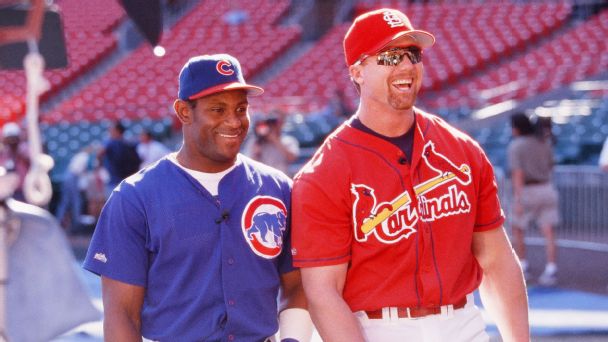By Nathan Tucker
nrtucker@lc.edu
On Sunday, June 14, ESPN debuted it’s latest documentary “Long Gone Summer”. The documentary was a look into the 1998 MLB home run race between Cardinals slugger Mark McGwire and Chicago Cubs player Sammy Sosa.
The two captivated the sports world for six months, drawing massive crowds to Cardinals and Cubs games no matter if they were at home or on the road. Baseball desperately needed the shot in the arm that the home run race of 98 provided.
The MLB strike of 1994 saw many fans leave the game. Crowds were dwindling. Even the Cardinals, home of the self-proclaimed “Best Fans in Baseball”, struggled to fill old Busch Stadium.
The home run race changed all of that. McGwire and Sosa became rock stars in the respective cities of St. Louis and Chicago.
The documentary shows a St. Louis area classroom where a teacher of a grade school class asked how many of the students were watching the Cardinals/Cubs game that night. All the hands in the room shot up.
As a probably too-old community college student I actually remember being a kid in the St. Louis area as McGwire captured hearts and minds. I had the McGwire baseball glove, bat, jersey and even dressed up as him for Halloween that year. Complete with a drawn on goatee.
I still remember going to old Busch Stadium hours before a game in May of that year to watch McGwire take batting practice. His batting practice sessions were must-see viewing, especially if you had a seat out in the bleachers.
That May game I went to, a 5-4 win over the then-named Florida Marlins, was headlined by Mark McGwire’s longest home run of the 1998 season, a booming 545-foot blast that hit the upper deck in straight away center at old Busch. The shot landed just short of the scoreboard that tracked McGwire and Sosa’s home runs that year.
While the documentary is a fun trip down memory lane for me and for those who remember that summer in the city, it falls short of truly capturing the important aspects of the home run race. It also does a bit of disservice to Sammy Sosa’s hype during that year.
The documentary only very briefly touches towards the end how for a single summer, just after Michael Jordan and the Chicago Bulls’ sixth NBA title, Sammy Sosa was as big as Jordan, if not bigger.
Most importantly, and in the greater picture of the baseball world, the bigger story that was almost avoided by the documentary is the steroid use of McGwire and Sosa. The documentary merely touches on McGwire’s admission of steroid use, and Sosa’s refusal to admit wrongdoing.
To dance around steroid use and the cloud it hung over the careers of the two men who starred in the home run race is a disservice to the real story here. Not just McGwire and Sosa’s use or not, but the implications of what’s now known as the “steroid era” in Major League Baseball.
Despite being widely considered the driving force behind fans “coming back” to baseball following the ‘94 strike, steroids kept McGwire and Sosa out of baseball’s hall of fame. Sosa’s refusal to admit wrongdoing has been held against him by his former ballclub.
Sosa has made it very clear over the years that he has no interest in admitting guilt. He denies ever taking performance-enhancing drugs (PEDs), and has never tested positive for anything. Granted, MLB wasn’t really testing for PEDs like they do now.
The documentary fell short of truly telling the tale of the aftermath of the Long Gone Summer. It’s a fun time capsule for a sports fan of a certain age, but falls short of being a truly good documentary of the event it’s capturing.




